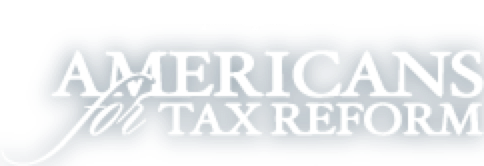ATR Op-Ed in Townhall: How Stablecoins Can Help the Underbanked
In an op-ed published in Townhall yesterday, ATR Federal Affairs Manager Bryan Bashur outlined how stablecoins (digital tokens backed by reserve assets such as the U.S. dollar or short-term debt) can provide financial services to Americans who have previously lacked easy access to capital.
Lower-income individuals, minorities, and rural communities are the most likely to benefit from access to digital assets. As Bashur explains:
According to a Morning Consult poll, 37 percent of the underbanked population own cryptocurrency compared to only 10 percent of individuals who are fully banked.
Most importantly, the unbanked or underbanked individuals in the United States tend to be minorities. Black and Hispanic households are about five times as likely to be unbanked as white households. According to a survey conducted by the Federal Deposit Insurance Corporation (FDIC), in 2019 “unbanked rates were higher among lower-income households, less-educated households, Black households, Hispanic households, American Indian or Alaska Native” households.
Rural communities are also more likely to lack access to financial services. The FDIC reported that “64.6 percent of rural households used bank credit, compared with 69.2 percent of urban households and 77.3 percent of suburban households.”
Finally, low-income households are also disconnected from banking. The FDIC found that “only 37.0 percent of households with less than $15,000 in income used bank credit, compared with 89.9 percent of households with income of $75,000 or more.”
Unfortunately, the Biden administration opposes the development of stablecoins and the innovative financial services that they can offer. Bashur points out that:
This month, the President’s Working Group on Financial Markets, the FDIC, and the Office of the Comptroller of the Currency (OCC) published a report on stablecoins that asked Congress to pass legislation that would only allow federally insured depository institutions to issue stablecoins. The report also says that the Securities and Exchange Commission (SEC) and the Commodity Futures Trading Commission (CFTC) have broad authority to regulate stablecoins.
Biden’s Office of the Comptroller of the Currency (OCC) has been particularly opposed to stablecoin development and promotion. Bashur states that:
Following the publication of the Biden administration’s report on stablecoins, Acting Comptroller of the Currency, Michael Hsu, recently said that stablecoin development is “not what you want” and that the outcomes of innovation are “not going to be good.”
Fortunately, some groups have the right idea when it comes to protecting investors while also encouraging the usage of stablecoins. The Cato Institute has written a detailed framework that avoids burdensome regulations but requires adequate disclosures so that bad actors will not take advantage of investors. Bashur explains that:
The framework would amend current statute so that issuers of digital tokens are regulated as “limited purpose investment companies” and have certain collateral requirements they must meet. The proposal would also require the issuers to disclose “a detailed explanation of its reserve holdings” including the value of the assets and the percentage of each asset. For example, how much of the stablecoin is backed by the U.S. dollar versus short-term debt.
Bashur concludes by stating that any new regulatory framework should promote stablecoin innovation, expand access to financial services for the underbanked, and provide safeguards for crypto investors.
Click here to read the full op-ed.
